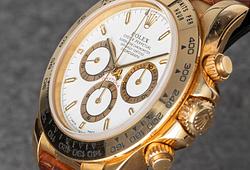A bronze mirror with double fishes design, Jin dynasty (1115—1234).
Two fishes are decorated on the back side of this bronze mirror. A dynamic pattern of water grass and waves around them, these two fishes are swimming and frolicking about around the mirror knob. The word “fish” and “surplus” in Mandarin are homophones, which represents abundance and well-off life. Furthermore, in the Chinese traditional customs, fish symbolizes the good wish of the prosperity of future generations. Diameter 18,5 cm.
Tarnished, wear.
Alkuperä - Provenienssi
From the collection of a Swedish conneisseur of antiques with a great passion and interest for Asian Works of Art, especially Chinese porcelain, enamels and bronze mirrors. The mirrors were brought together during the 1950's and 1960's, thence by descent within the family.
Näyttelyt
Compare a similar mirror in the Collection of Hunan Provincial Museum. Bronze Mirror with Fish Design, Jin Period 1115—1234 AD. Diameter: 18.7cm.
Kirjallisuus
Article by Alain.R.Truong, Bronze Mirrors through the Ages from the Collection of Hunan Provincial Museum, 29 Aout 2015.
Muut tiedot
Bronze mirror had always been regarded as a daily-use article to put up make-up or dress up all the way through the late Neolithic Period to Ming and Qing Dynasties. Blended with our forefathers’ aesthetic affection and delicately made, these bronze mirrors, with their gorgeous patterns and solemn inscriptions, add luster to Chinese cultural history.
People in ancient China believed that the bronze mirrors can be used to ward off evil spirits and subdue demons, so the bronze mirrors were often found being placed on top of the door, the ridges and walls of houses and temples, and even on the soldier's chest.































